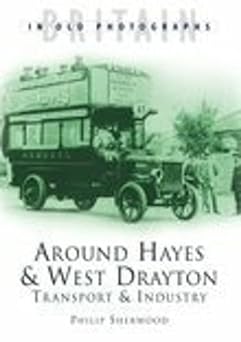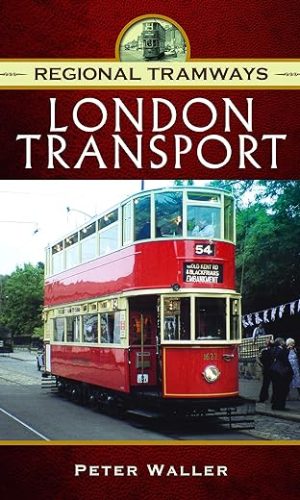The London DMS
£9.50
Vilified as the great failure of all London Transport bus classes, the DMS family of Daimler Fleetline was more like an unlucky victim of straitened times. Desperate to match staff shortages with falling demand for its services during the late 1960s, London Transport was just one organization to see nationwide possibilities and savings in legislation that was about to permit double-deck one-man-operation and partially fund purpose-built vehicles. However, prohibited by circumstances from developing its own rear-engined Routemaster (FRM) concept, LT instituted comparative trials between contemporary Leyland Atlanteans and Daimler Fleetlines.The latter came out on top, and massive orders followed. The first DMSs entering service on 2 January 1971.In service, however, problems quickly manifested. Sophisticated safety features served only to burn out gearboxes and gulp fuel. The passengers, meanwhile, did not appreciate being funnelled through the DMS’s recalcitrant automatic fare-collection machinery only to have to stand for lack of seating. Boarding speeds thus slowed to a crawl, to the extent that the savings made by laying off conductors had to be negated by adding more DMSs to converted routes!Second thoughts caused the ongoing order to be amended to include crew-operated Fleetlines (DMs), noise concerns prompted the development of the B20 quiet bus variety, and brave attempts were made to fit the buses into the time-honored system of overhauling at Aldenham Works, but finally the problems proved too much. After enormous expenditure, the first DMSs began to be withdrawn before the final RTs came out of service, and between 1979 and 1983 all but the B20s were sold as is widely known, the DMSs proved perfectly adequate with provincial operators once their London features had been removed.OPO was to become fashionable again in the 1980s as the politicians turned on London Transport itself, breaking it into pieces in order to sell it off. Not only did the B20 DMSs survive to something approaching a normal lifespan, but the new cheap operators awakening with the onset of tendering made use of the type to undercut LT, and it was not until 1993 that the last DMS operated.
Read more
Additional information
| Publisher | Pen & Sword Transport (30 Nov. 2016) |
|---|---|
| Language | English |
| File size | 47884 KB |
| Text-to-Speech | Enabled |
| Enhanced typesetting | Enabled |
| X-Ray | Not Enabled |
| Word Wise | Not Enabled |
| Sticky notes | Not Enabled |
| Print length | 650 pages |













by Amazon Customer
This author has written a number of books on different classes of London Transport buses, as well as later more widespread types in todays London. This book as the headline says gives the history of this class of Bus in London Service, starting by showing the background of rear engine/front entrance double deckers in the mid 1960’s to the types entry into service and after a fairly short period the start of its withdrawal although it still remained to be seen on the streets of London in the outer suburbs in places until the 1990’s. This is all mentioned in the book, backed up by well reproduced photo’s, that show that the DMS carried more liveries than plain red. Towards the end of the book the vehicles are also shown in what became their second lives operating services in what had become LRT, working services in it’s area under contract by other operators, as well as some of the lower cost units set up by some of the sections of London Buses ltd. It even features photos on one DMS that was rebuilt so to speak with its bus front end, tube train middle and at the time a modern day commuter type train front on the back! All in all a very good book for anybody interested in this particular bus that pointed the way to how all London Buses would be in layout, but itself at the time soon become infamous
by Amazon Customer
A comprehensive history of the DMS with many excellent photographs, all in colour
by Alan Wright
Present
by J. Adlam
This is without doubt the definitive published history of the DMS in London, lavishly illustrated and with a wealth of detail about the vehicles, route allocations, policy decisions, etc. It stands up well compared with the definitive histories of earlier types written by Ken Blacker (though in one or two places I feel Blacker might have given a little more technical detail or policy background). Matthew Wharmby’s writing style is quite individual but very readable, and enthusiasts will find pretty much all the information they want here.
by Ian bEVAN
Great book, on time delivery
by Recipro44
As I’ve just taken the trouble to write a less than enthusiastic review about a more recent book from the same author, I thought I’d counter-balance it with a review of this book. As with Matthew Wharmby’s earlier books on Metrobuses and Leyland Titans, this is a beautifully illustrated and highly detailed account of the history of the DMS class bus. The book tells the story of how London Transport was forced to hastily purchase these vehicles in vast quantities in the early 1970s in the hope of overcoming the issues of reduced passenger numbers, reduced staff and reduced government subsidies. The plan was to convert the entire London bus network to driver-only operation by 1978 using these vehicles but it quickly became apparent they could not cope with London’s tough operating conditions and their mass purchase was ultimately considered a disaster.
The author, like myself, saw the good in these vehicles, which unfairly took the brunt for all of London Transport’s problems at the time, and provides a balanced account which highlights the obvious flaws in these vehicles, particularly in London operation, but how much of this was attributable to the failings and narrow mindedness of those both in bus design and bus operation.
This is as much an account of a very turbulent time for London Transport as it is a history of the vehicle in question – and as stated already it is beautifully (and comprehensively) illustrated.
Even for bus enthusiasts who despised these vehicles at the time and still to this day remain rigidly loyal to their beloved RTs, this book is still highly recommended.
by Ian
As a RT and RM fan so to speak why buy this well it’s part of LT history I grew up with them hated them but now understand they were bought for a reason love them or hate them this book gives an excellent balance to the pro and cons of the DMS
by Graham
A superb book on the wonderful DMS, my favourite ever bus! Every page is a treat and the DMS variations are covered admirably. Difficult to put down. Highly recommended.